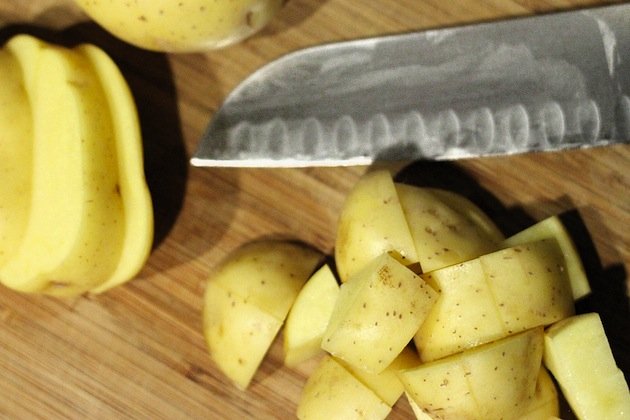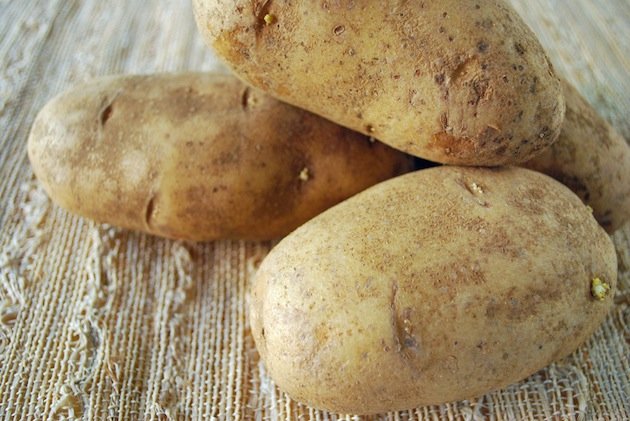
Choosing the right Potato
By Tris Marlis - Wednesday, May 01, 2013
There are about 4,000 types of potatoes in the world, from white, to yellow and blue. In Peru alone, they have in their midst around 3000 variants and only a few hundred is known to be edible. Choosing the right potato for your bagedil (fried potato croquette) or soup can be overwhelming, even though the local stores only offer a few varieties. The main difference between these potatoes is neither the colour nor shape, but the amount and nature of the starch they contain.

You may divide potatoes into three categories: high-starch (baking potato), low-starch (boiling potato) and medium-starch (all purpose).
Baking potato is high in starch known as amylose. These potatoes are longer in shape with coarser skins. The texture is rather dry and mealy, but it turns light and fluffy when cooked. The most common high-starch potato we have in the supermarket is Russet, which is great for baking, mashing and making French fries. It is also what we use to make bagedil and croquette. In Indonesia, high-starch potato is also used as a sauce thickener, often mashed and added in the peanut sauce for Lotek (Indonesian salad with spicy peanut sauce).
Boiling potato is also known as waxy potato; it is high in pectin which helps to hold the potato together when boiling in soup or stew. This type of potato can hold their shape well, thus it is great for salads, casserole, and also for barbeque. They usually come with thin and smooth skin, high in moisture and sugar but low in starch. Some examples are yellow potato, red potato and salad potato. You can mash them, but the result is going to be thick and lumpy.

Then there are potatoes that fall in the middle ground, also known as the all-purpose potato, such as Yukon Gold. This type of potato has smooth skin with yellow tinged flesh. It is high in moisture and yet hold well together in boiling water. It is sometimes added in mash potato to give it a creamier texture. This type of potato is best for pan-frying and roasting.

Next time when you stumble upon potato in a recipe book, make sure you find the perfect starch for your experiment.


